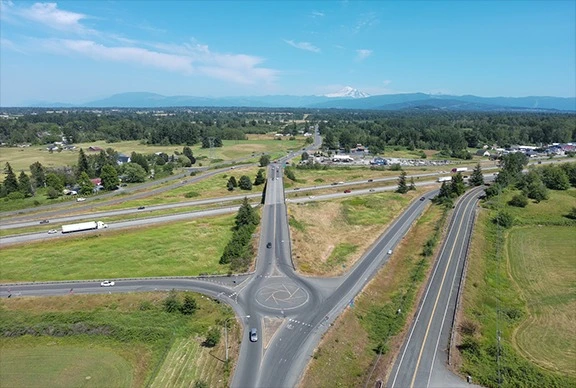Navigating Roundabouts in Washington State: A Guide to Safe and Efficient Driving
Roundabouts are becoming increasingly common on Washington state roads, offering a safer and more efficient alternative to traditional intersections. However, many drivers remain unsure about the proper way to navigate these circular intersections. Understanding the correct procedures not only ensures your safety but also helps maintain smooth traffic flow. This blog will guide you through the proper way to use a roundabout, including why it is crucial not to stop once inside the roundabout.
Entering the Roundabout: Yield, Don’t Stop
As you approach a roundabout, the first rule is to slow down and prepare to yield to traffic already in the circle. Unlike traditional intersections where stopping is often mandatory, roundabouts are designed to keep traffic moving. You should approach the roundabout at a speed that allows you to yield safely but do not stop unless absolutely necessary. Look to your left to see if any vehicles are already circulating. If there is a gap in traffic, merge smoothly into the roundabout without stopping.
Circulating in the Roundabout: Keep Moving
Once you have entered the roundabout, it is crucial to keep moving. The design of a roundabout is intended to reduce the likelihood of collisions by ensuring that all traffic moves in the same direction and at a consistent speed. Stopping in the roundabout disrupts this flow and can cause confusion for other drivers, increasing the risk of accidents. Keep your vehicle moving at a steady speed, staying within your lane, and continue until you reach your exit.
Exiting the Roundabout: Signal Your Intent
Before you exit the roundabout, be sure to signal your intent to turn right. This allows drivers behind you to anticipate your actions and adjust their driving accordingly. As you approach your exit, check your mirrors and blind spots for any pedestrians or cyclists who may be crossing. Then, exit the roundabout smoothly, maintaining awareness of your surroundings as you merge into the new roadway.
Why Stopping in a Roundabout is Dangerous
Stopping inside a roundabout can create a hazardous situation. Since roundabouts are designed for continuous movement, an unexpected stop can lead to rear-end collisions or force other drivers to take evasive action, which could result in accidents. Additionally, stopping can cause confusion among drivers unfamiliar with roundabouts, further increasing the likelihood of collisions. It’s essential to keep moving at a steady pace to maintain the efficiency and safety of the roundabout.












